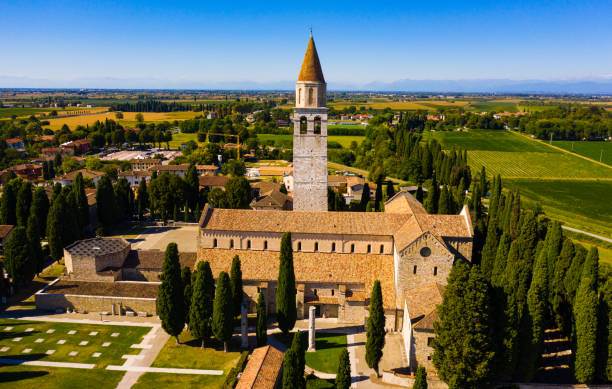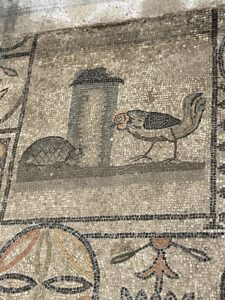Briefly about the city
Aquileia is a city located in northeastern Italy, in the Friuli-Venezia Giulia region. It is a very important tourist center, which was formerly the main center of the amber trade in the Roman Empire.
Aquileia and Venice. What do they have in common? A history connecting these two cities

The founding of Aquileia dates back to 181/180 BC. It was founded by the Romans. Initially, it functioned as a fortress during the wars with the Illyrian tribes. The city began to develop thanks to the gold trade, which was mined near today’s Klagenfurt. It quickly became an important economic center – the city was at the end of the famous amber route leading from the Baltic Sea to Italy. In 452, Aquileia was attacked and captured by the Huns. Some of the surviving population of Aquileia took refuge in the lagoon, where, protected by water, they founded a new settlement, known to us today as Venice. The year 452 is considered to be the legendary beginning of the city. Some of the inhabitants returned to Aquileia and tried to raise the city from the ruins. However, the final blow was inflicted by the Lombards in the 6th century. Again the inhabitants fled to the lagoon, this time founding Grado, and Aquileia never regained its former importance, although it has survived to this day.
Places worth visiting
– Basilica of Our Lady of the Assumption (Basilica di Santa Maria Assunta)
Built in the 4th century, it was destroyed twice, first by barbarians and later by an earthquake. The temple was rebuilt in the 11th century in the Gothic style, and during the Venetian rule it was decorated with Renaissance details. The most valuable element of the basilica is an early medieval mosaic. It dates back to the 4th century and its area is 760 m2. It is made of thousands of plates the size of a fingernail. They depict people, animals and plants in geometric patterns. In 1998, the basilica was added to the UNESCO World Heritage List.



-River Port
formerly, when the port operated in Roman times, the width of the river was almost 50 meters. At that time, it was a very important communication site where the amber route ending in Gdańsk began. The Natisone and Torre rivers flowing here made Aquileia a defensive fort of the Roman Empire protecting against barbarians. Currently, the port is only 5 meters wide, but the still well-preserved remains of the port are a very important monument of the city worth seeing.

National Archaeological Museum
Opening hours: 8:30-19:30, closed on Mondays. Price: 4 euros. In Aquileia is one of the most important museums containing Roman finds. The exhibitions include ceramics, jewelry, stones, coins and household items that were donated or excavated between the 19th and 20th centuries. Also important is the collection of stone works, ranging from portraits to monumental sculptures.

-Roman Forum
being the heart of the city’s political, administrative and social life, was a square surrounded by public buildings. It was first built in the 2nd century BC. The columns of the eastern wing of the arcades, which were raised and integrated with bricks in the 1930s, have been preserved to this day. The square is 141 m long and 55 m wide.
